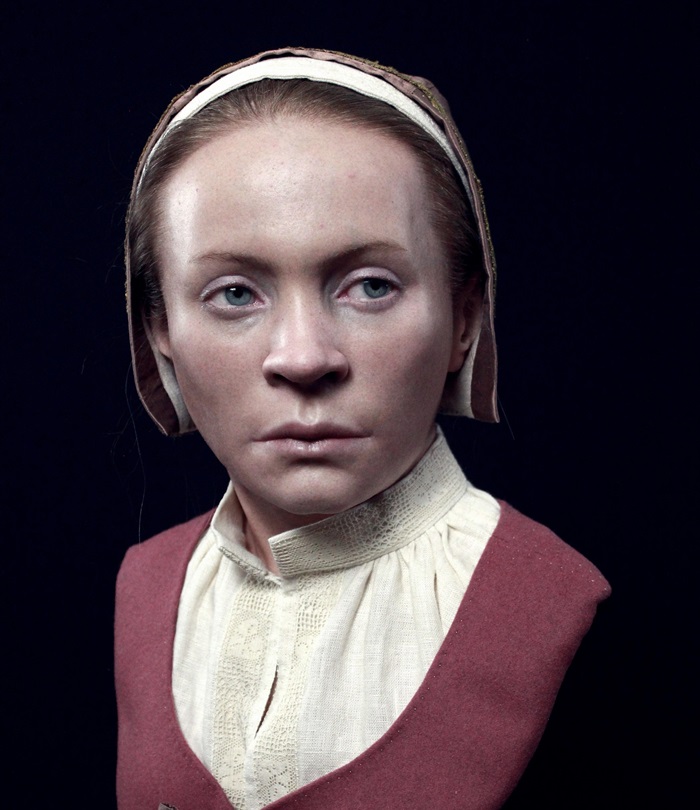
A realistic image of a young woman buried with a sickle around her neck and a padlock on the big toe of her left foot - a reconstruction of the find of researchers from the Institute of Archaeology of the Nicolaus Copernicus University in Toruń as part of the Pień Project - was developed by an interdisciplinary team of anthropologists, medics and forensic anthropologists. The scientists proved that the 'Pień vampire' suffered from cancer.
The scientists have just summarised the latest stage of work aimed at reconstructing the image of the woman, whom - due to the 'anti-vampiric' nature of the objects found with her - popular science publications dubbed the 'Pień vampire'. A 3D model of her skull was prepared, based on which scientists reconstructed the woman's probable appearance.
The tests showed that the buried woman suffered from a haemangioma - a tumour in the body of the sternum, which could cause pain and contribute to the development of a deformation in the form of a tumour visible on the chest. Genetic and isotope analyses suggest that the 'vampiress' could have been of Scandinavian origin, reports the Toruń Educational Association 'Ewolucja', which disseminates research results.

The 17th-century grave of the woman with a sickle on her neck and a triangular padlock on the toe of her left foot was discovered in the village of Pień near Dąbrowa Chełmińska by archaeologists from the Nicolaus Copernicus University in Toruń. The discovery was made in 2022 by a research team led by Dr. Dariusz Poliński, a professor at the Nicolaus Copernicus University.
Oscar Nilsson's reconstruction of the woman's appearance was preceded by anthropological examination of the skeleton carried out by Dr. Alicja Drozd-Lipińska from the Museum in Włocławek. Preparations for the creation of a 3D model of the skull were carried out by an international team. The work of the group of Polish medics was coordinated by haematologist Maria Czyżewska. Pathological changes in the sternum were revealed thanks to tomographic scans of the skeleton. The examinations were supplemented by numerous consultations in the field of radiology and imaging diagnostics, haematology, orthopaedics, neurology and pathomorphology. The consulting experts included forensic anthropologist Dr. Heather Edgar from the University of New Mexico (USA), who confirmed the connection between the pathological changes and the tumour and probable pain.
The materials for 3D printing of the skull were prepared and developed by Dr. Łukasz Czyżewski from the Institute of Archaeology of the Nicolaus Copernicus University. The model printed in Poland became the basis for the reconstruction of the woman's image. The author of the image also used the anthropological study of the entire skeleton, as well as the results of DNA tests (performed by Dr. Magnus Lundgren; SciLifeLab Ancient DNA, Evolutionary Biology Centre Uppsala in Sweden) and isotope tests (conducted by doctoral candidate Paige Lynch from the University of New Mexico in the United States).
The scientists are planning further research on the skeleton of the young woman and field work on other graves. In 2024, tests with UV lamps were carried out at the cemetery in Pień to identify bone remains on the surface (a method developed by Karol Woliński, which is in the testing phase). Continuation of field research is also scheduled for 2025, because geophysical work (magnetics and electrical resistivity prospection) at the studied site carried out by Wiesław Małkowski's team from the Faculty of Archaeology of the University of Warsaw showed anomalies that could indicate the existence of additional burials.
PAP - Science in Poland, Karolina Duszczyk
kol/ zan/ kap/
tr. RL












